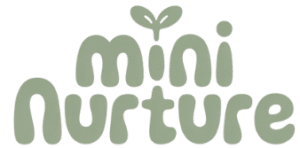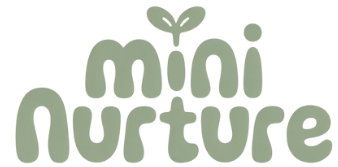Learning about body parts is an important part of early childhood development. It helps children understand their own bodies, improves motor skills, and allows them to express if they feel pain or discomfort.
Body parts preschool activities are simple and fun ways to teach young children about their bodies while keeping them engaged and active.

These activities include a variety of games, crafts, and songs that make learning interactive and memorable. For example, movement games help kids recognize and use different body parts, while art projects allow them to explore creativity and reinforce their knowledge.
Parents and educators can also use printable materials to support learning at home or in the classroom.
Key Takeways
- Activities combine fun and learning to help children identify body parts.
- Movement and sensory games support active engagement and coordination.
- Creative projects and printables reinforce understanding outside of playtime.
Core Body Parts Identification Activities

These activities help preschoolers learn the names and locations of key body parts through hands-on and visual tools. They focus on clear recognition and practice, which builds early anatomy awareness and vocabulary.
Label the Body Printable
Label the body printables provide a simple, interactive way for kids to connect words to body parts. Children can color the outlines of a human figure and then place labels on parts like head, arms, legs, eyes, and mouth.
This activity improves fine motor skills and reinforces word recognition. It works well both in classrooms and at home.
Teachers or parents can prepare sheets with blank labels or pre-printed words for children to match with the right body parts.
Printable versions often include common body parts, making the task manageable while introducing kids to basic anatomy terms. It also encourages early reading by linking spoken words to printed labels.
Body Parts Flashcards
Body parts flashcards are visual aids showing clear images of each part together with its name. They are useful for quick recognition and memory drills.
Cards typically feature single body parts, such as nose, ears, hands, or feet. These flashcards can be used in matching games, sorting exercises, or simple flash-and-name sessions.
Flashcards support both group learning and one-on-one teaching. Because flashcards are portable, they work well in a variety of settings, helping children practice and repeat body part names.
Body Parts Bingo Game
The body parts bingo game combines play with learning by encouraging children to recognize and locate parts on their own bodies or on pictures. Players receive bingo cards depicting various body parts.
When the caller names a body part, players cover the matching image. This game improves listening skills, attention, and helps kids solidify body part vocabulary.
Bingo is fun, social, and adaptable for different learning levels. It introduces a competitive but friendly environment where children can practice body part names together.
This activity can be customized to focus on key body parts or expanded with more specific features as children progress.
For more ideas on body-related learning tools, see 15 Body Parts Activities for Preschoolers.
Interactive Movement and Sensory Games

Engaging preschoolers in activities that combine movement and sensory play helps them learn body parts in a hands-on way. These games encourage physical activity while improving coordination and awareness.
Using clear instructions and simple tools makes the experience both fun and educational.
Simon Says
Simon Says is a classic game that promotes listening skills and body part recognition. Children follow commands only when preceded by “Simon says.” For example, “Simon says touch your nose” or “Simon says wiggle your fingers.”
This game encourages kids to identify body parts quickly and respond with the correct movement. It also helps develop gross motor skills and attention to detail.
Teachers or parents can add variety by using less common body parts or combining actions, such as “Simon says tap your knee and touch your ear.” Simon Says works well in small or large groups and requires no materials, making it easy to play anytime.
Body Parts Matching and Tracing
Matching and tracing activities focus on fine motor skills and body part identification. Children use picture cards showing body parts and match them to a larger picture or a puzzle.
Tracing involves using their finger or a crayon to follow the outline of a body part on paper or a board. This visual and tactile method helps kids connect body part names with shapes and locations.
These activities improve hand-eye coordination and reinforce vocabulary. Using colorful flashcards or puzzles with realistic images can make the activity more engaging and effective.
Human Body Tracing
Human Body Tracing is an interactive activity where children lie down on large paper or a mat and have their body outlines traced. Afterward, they can draw or stick labels on different body parts.
This hands-on approach gives preschoolers a full-body perspective and helps them understand the size and position of their limbs and features. It also encourages collaboration if done in groups, where kids can trace each other’s bodies.
Adding stickers or coloring to the traced figure reinforces learning. This activity blends sensory input with movement and creativity, enhancing both body awareness and fine motor skills.
Learn more about these activities at 50+ body parts games for preschoolers.
Creative Art and Hands-On Projects

Hands-on projects help preschoolers learn about body parts using creativity and play. These activities improve fine motor skills and give kids a concrete way to see and touch different parts of the body.
Using art materials and puzzles encourages active learning and keeps children engaged.
Handprint and Footprint Art
Handprint and footprint art uses children’s own hands and feet to teach body part recognition. Kids dip their hands or feet in non-toxic paint and press them onto paper.
This creates a clear print that shows the shape and size of their body parts. After printing, children can decorate the prints by adding eyes, noses, or other features.
This turns the prints into animals, people, or imaginative creatures. It helps kids link the shape of their hands and feet to real body parts.
This activity also supports sensory learning through touch and color. It can be done individually or in groups, making it perfect for home or classroom settings.
Organ Stones
Organ stones are a creative project where kids paint smooth stones to look like organs. Children learn about the heart, lungs, brain, and more by creating colorful representations of each organ.
This hands-on activity combines art with basic anatomy lessons. Kids understand what each organ does while they paint and decorate the stones.
The stones can be used later for sorting games or storytelling to reinforce learning. Supplies needed include smooth stones, paint, brushes, and simple diagrams of organs.
This project encourages kids to explore internal body parts in a tactile, visual way.
Body Part Puzzles
Body part puzzles help preschoolers learn the names and locations of different body parts through play. These puzzles include pieces shaped like arms, legs, eyes, or organs that fit together to form a whole body.
Kids practice matching shapes and identifying parts as they assemble the puzzle. This improves spatial reasoning and hand-eye coordination.
Some puzzles focus on external body parts, while others introduce internal organs. They can be made from wood, foam, or cardboard.
These puzzles are great for solo play or small groups and are useful tools for reinforcing body knowledge.
More ideas for creative activities are available at 30 body parts activities for preschoolers.
Printable and Take-Home Learning Resources

These resources help children reinforce learning about body parts outside of the classroom. They encourage hands-on practice and make it easy for parents to support their child’s understanding at home.
Each type focuses on a different way to engage preschoolers, from coloring to reading and visual presentations.
Body Parts Coloring Worksheets
Coloring worksheets are a simple but effective way to teach body parts. They usually feature outlines of the human body or close-ups of parts like the face or hands.
Children can color each part, which helps with recognition and vocabulary building. Worksheets often include labels, so kids learn the names while coloring.
This supports fine motor skills, too, because children practice staying within lines. Many printable options come with fun images, making the activity enjoyable and educational.
Parents and teachers can print these worksheets and use them repeatedly. They also work well as quiet-time activities or part of a lesson plan.
Some worksheets include matching or identifying tasks, deepening the child’s understanding of the body.
Preschool Mini Books
Mini books are small, simple books designed specifically for young children. These books focus on one or a few body parts per page, often with pictures and easy words.
They help kids connect words to images through a story or themed pages. Children can read these books multiple times, which reinforces learning.
The mini size makes them easy to handle and carry. They provide a chance for children to practice reading skills while reviewing body parts.
Teachers or parents can create their own mini books or download printable ones. These books are great for in-class use or take-home reading.
Because they are interactive, children stay engaged with the topic for longer periods.
Body Parts Presentation
Visual presentations about body parts help kids learn by seeing clear, labeled images. These can be printed posters or digital slides that show different parts of the body with simple descriptions.
Using a presentation allows educators to explain each part’s function and location. Children can point to or touch their own bodies as they follow along.
This active participation improves understanding and memory. Presentations can include photos, drawings, or even animated visuals for more appeal.
They are useful for group lessons or at-home learning and make it easier to discuss difficult concepts with young children.
For downloadable resources, printable worksheets, and other tools, educators can visit sites offering free and low-prep body parts activities like this collection of body parts activities.
Frequently Asked Questions

Teaching preschoolers about body parts involves a variety of hands-on activities, printable materials, and themed projects. Creative games and worksheets can build their vocabulary and fine motor skills while making learning enjoyable.
What are some engaging activities for teaching body parts to preschoolers?
Activities like life-size self portraits, sticker labeling, and Simon Says help children identify and remember body parts. Sensory bins with bones or blood components boost curiosity and reinforce learning through touch and play.
Where can I find printable worksheets on body parts for toddlers?
Printable worksheets that focus on coloring, labeling, and matching body parts are widely available on educational websites. Many free resources include playdough mats and fine motor skill sheets designed specifically for young children.
How can I incorporate a ‘My Body’ theme into activities for young children?
Using art projects like drawing life-size body outlines or creating self-portraits encourages self-awareness. Combining science activities such as “how the stomach digests food” or temperature sensing with hands-on crafts helps children understand how their bodies work.
What creative body parts activities are suitable for kindergarteners?
Kindergarteners benefit from more detailed projects like building heart pump models or skeleton puzzles. Activities involving eye color exploration and five senses investigations also match their growing curiosity and ability to grasp complex concepts.
Can you recommend interactive games for preschoolers to learn about body parts?
Games like Simon Says, Hokey Pokey, and body tracing with Legos are excellent for active learning. These games combine movement and listening skills while reinforcing body part names and functions.
What are the best body parts activity worksheets for early childhood education?
Worksheets that mix coloring, matching, and labeling offer strong educational value.
Those featuring playdough mats, printable puzzles, and themed coloring pages support fine motor skills and vocabulary development.
For additional ideas, the website with 25 Fun Body Parts Activities for Preschoolers provides a wide range of options.

